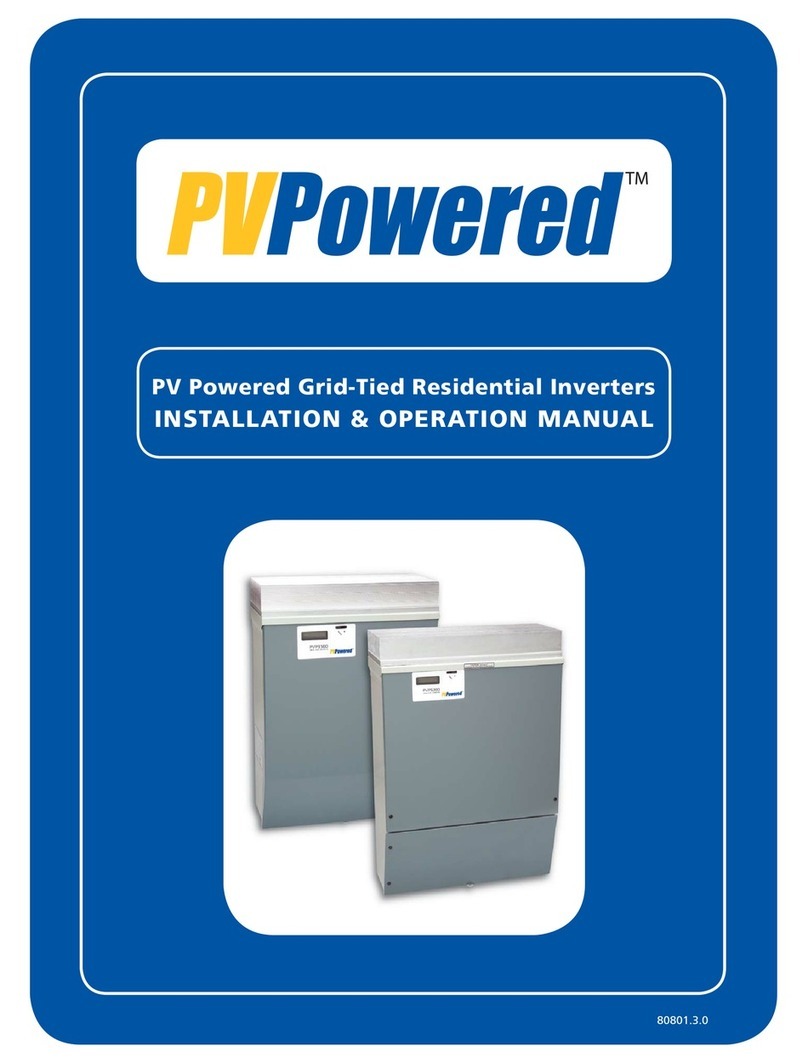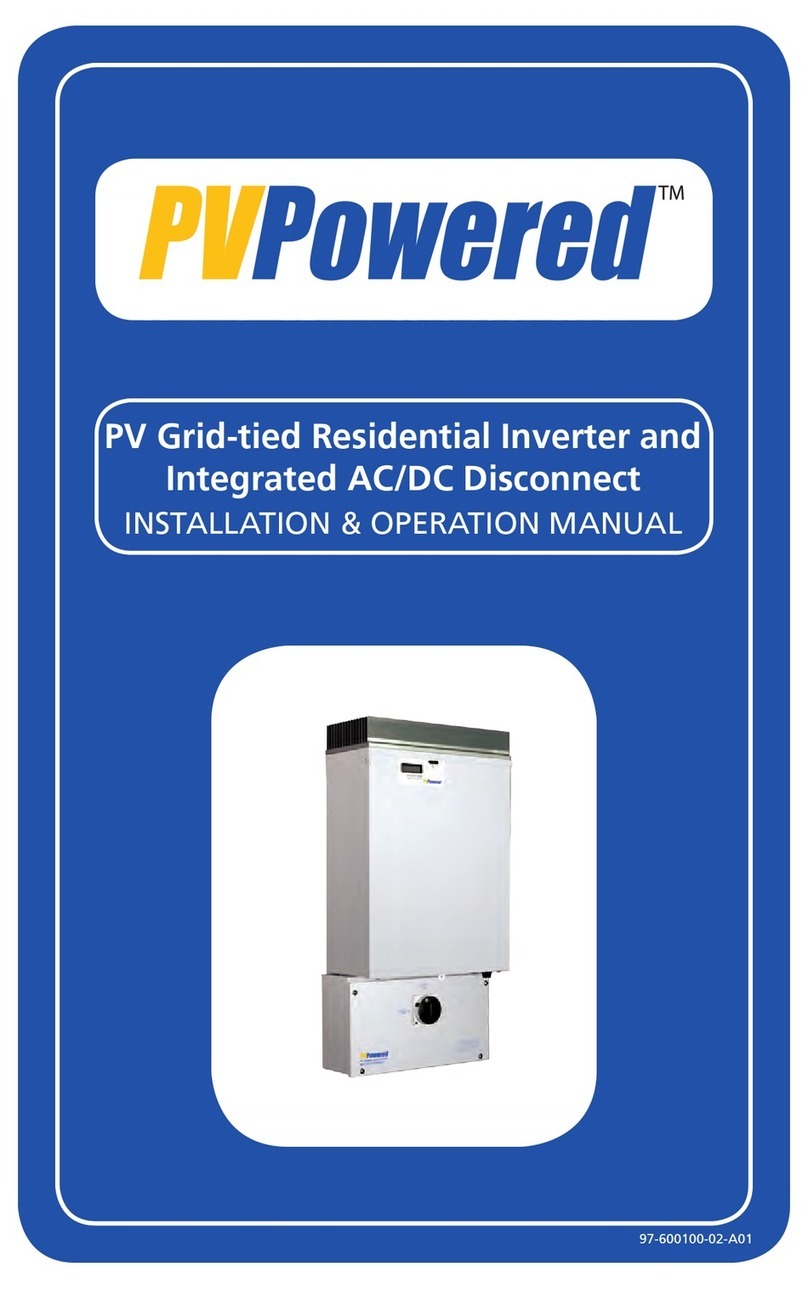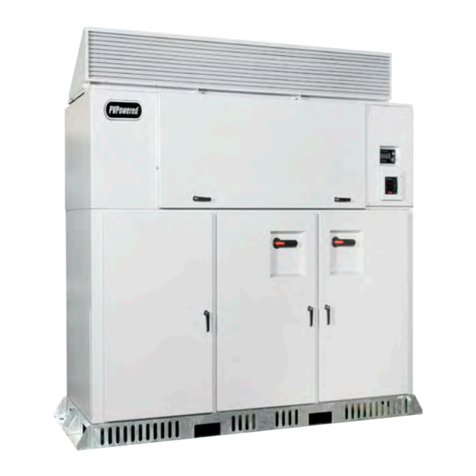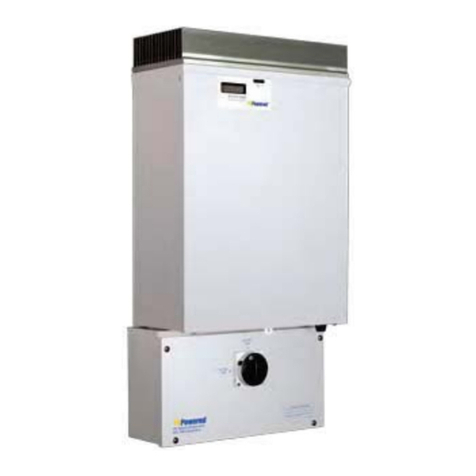
V97-600002 Page 2 of 31
Table of Contents
IMPORTANT SAFETY INSTRUCTIONS................................................................. 4
1INTRODUCTION ....................................................................................... 5
2INSTALLATION......................................................................................... 5
2.1Selecting a Location for the Inverter.................................................... 5
2.2Mounting the Inverter........................................................................ 5
2.2.1Mounting the Inverter .................................................................... 6
2.3Electrical Connections........................................................................ 7
2.3.1Inverter Voltage and Frequency Limits.............................................. 8
2.3.2Separation of Circuits..................................................................... 9
2.3.3Grounding ...................................................................................10
2.3.4GFI Circuit...................................................................................11
2.3.5Connecting the Inverter to the Electrical Grid....................................12
3OPERATION ............................................................................................17
3.1Start-Up Procedures for the Inverter...................................................17
3.2Inverter Front Panel Status Indicators.................................................17
3.2.1LED Indicator Lights......................................................................17
3.2.2Vacuum Fluorescent Display (VFD)..................................................18
4TROUBLESHOOTING ................................................................................19
4.1Red and Green LED Lights ON............................................................19
4.2Displayed Fault Codes ......................................................................20
4.2.1Multiple Faults..............................................................................20
4.2.2Fault Code List .............................................................................21
5SPECIFICATIONS.....................................................................................23
5.1Operational Specifications .................................................................23
5.2Abnormal Specifications....................................................................24
6LIMITED WARRANTY ................................................................................25
6.1Term of Coverage ............................................................................25
6.2Coverage........................................................................................25
6.3What is Not Covered.........................................................................25
6.4Disclaimer and Limitation of Liability...................................................26
6.5Arbitration ......................................................................................26
6.6Miscellaneous Provisions ...................................................................27

































